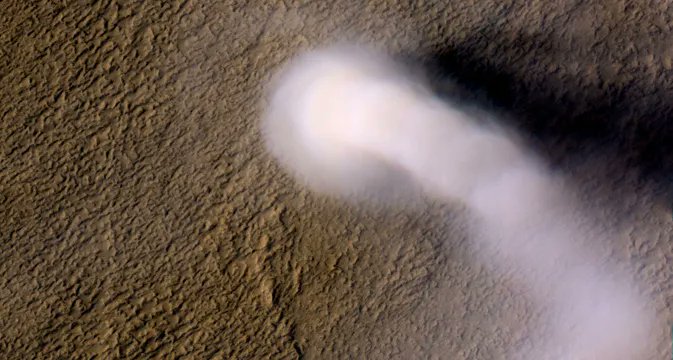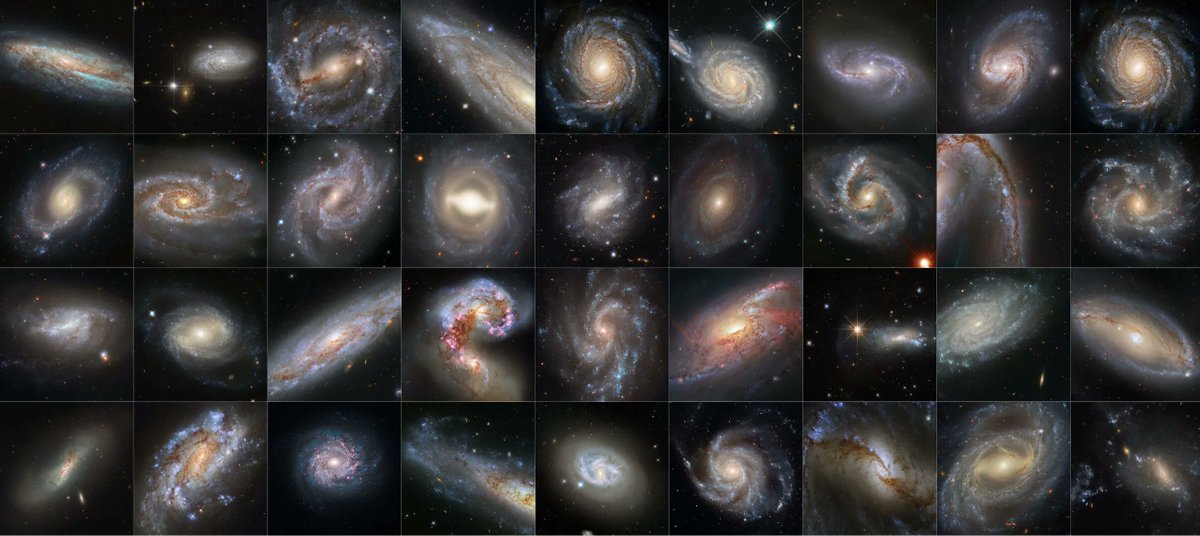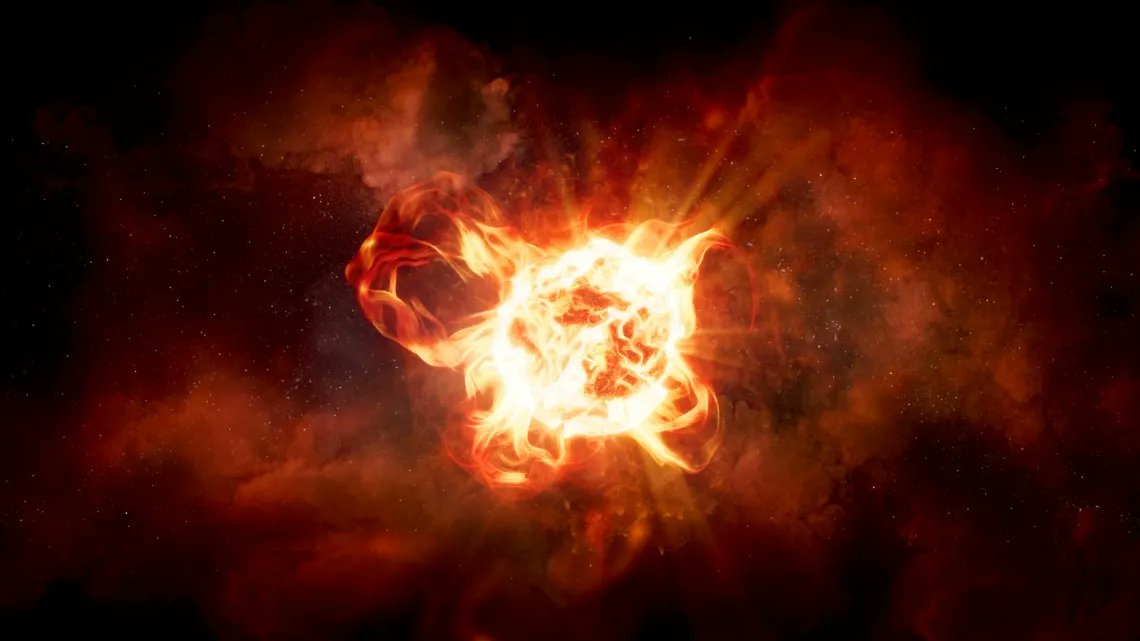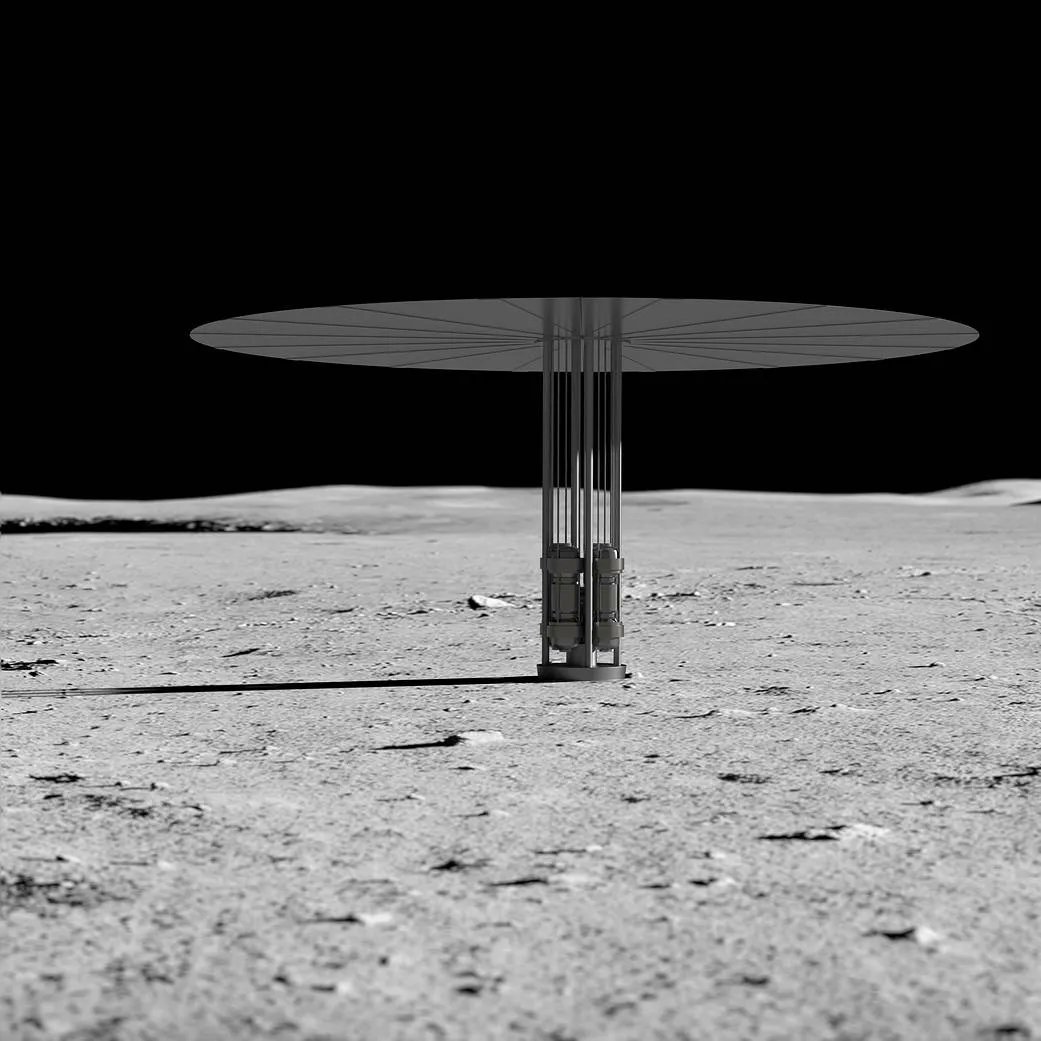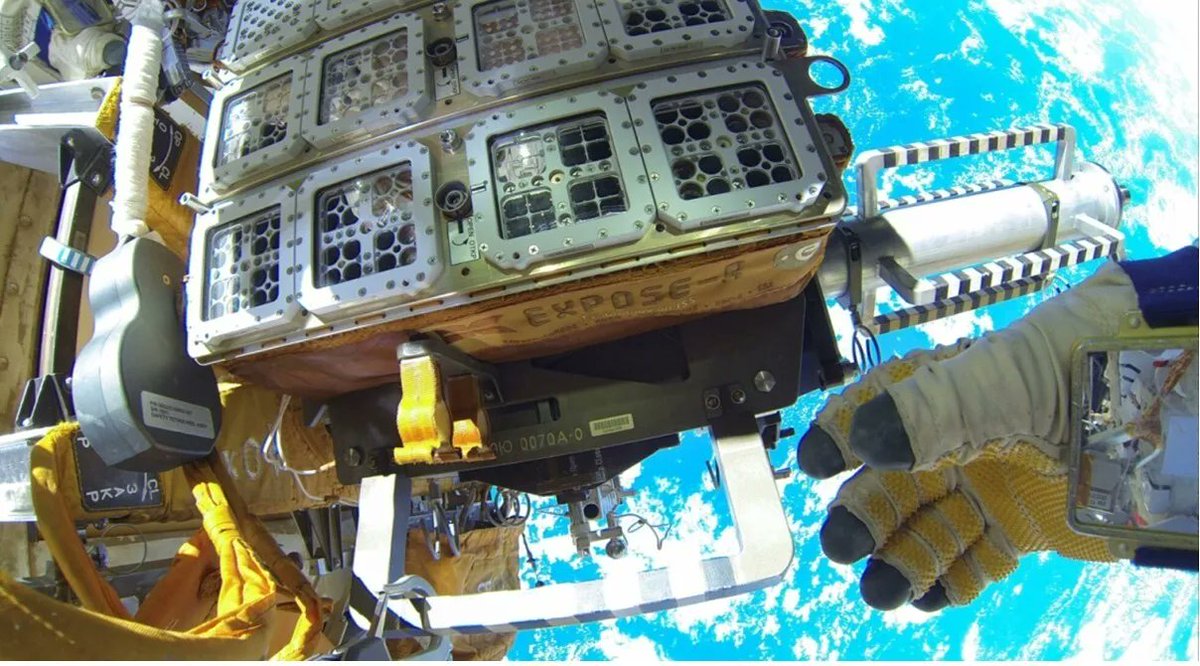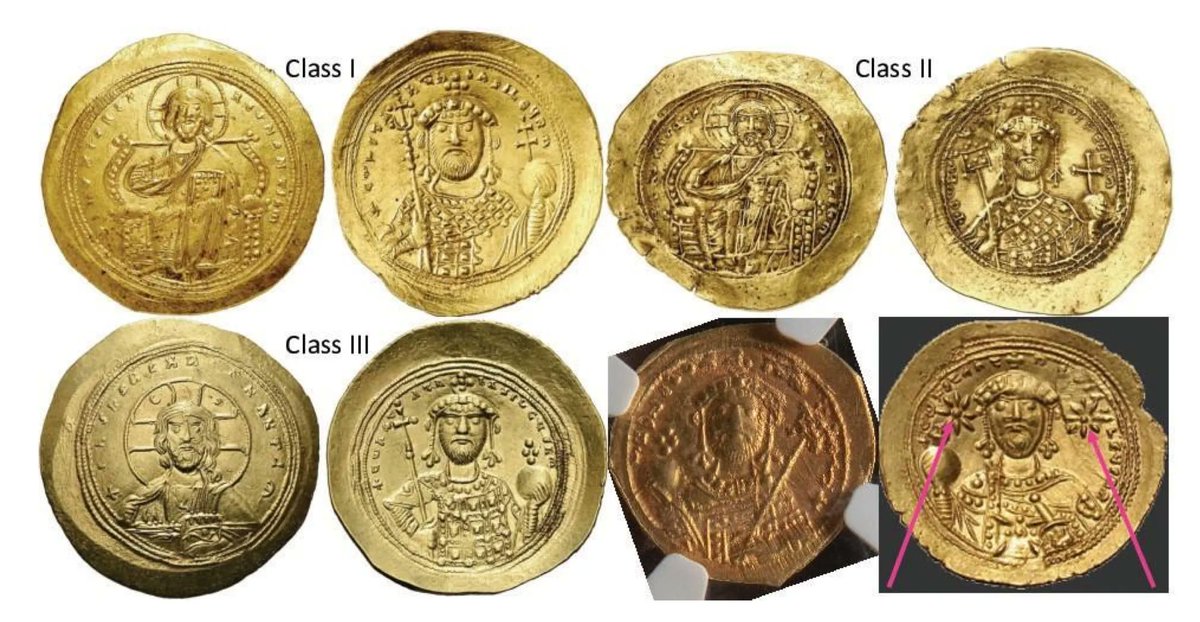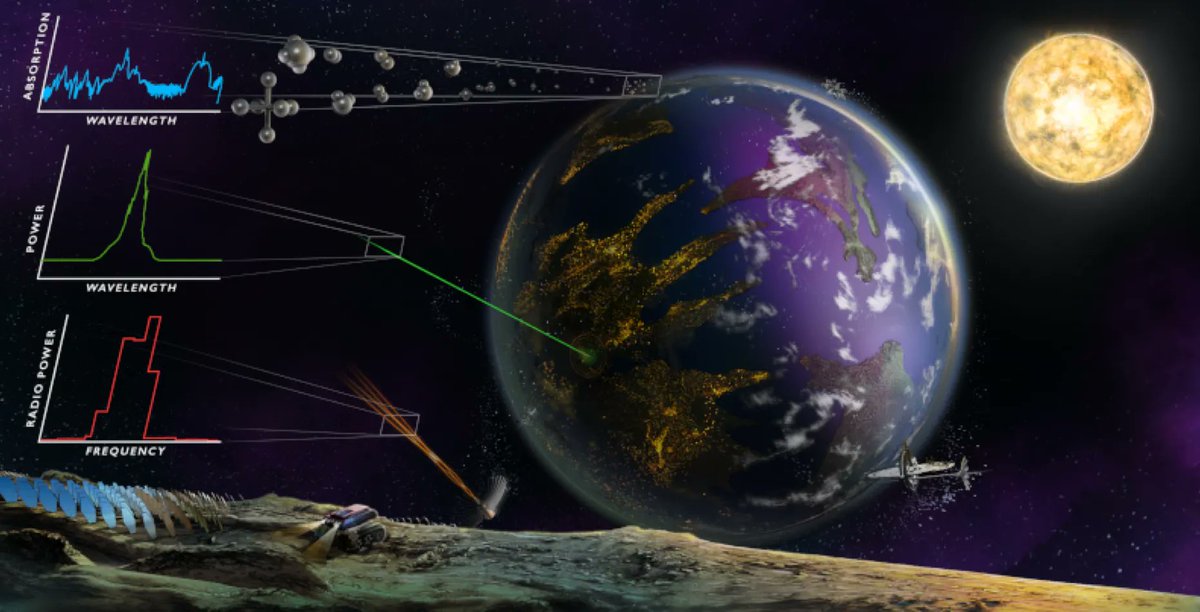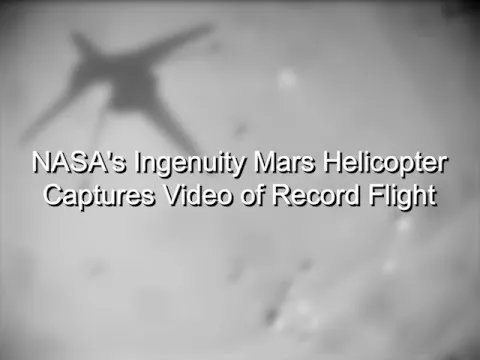Dust is an everyday feature on Mars and wreaks havoc on various pieces of equipment humans decide to send to it, such as Insight’s continual loss of power or the losses of Opportunity and Spirit. But we’ve never really understood what causes the dust to get up into the air in the first place. That equipment that is so affected by it usually isn’t set up to monitor it, or if it is, it has been sent to a place where there isn’t much dust, to begin with. Now, that has changed with new readings from Perseverance in Jerezo crater, and the answer shouldn’t be much of a surprise – dust devils seem to cause some of the dust in the atmosphere on Mars. But strong winds contribute a significant amount too.
Continue reading “Dust Devils and Strong Winds Produce the Constant Haze on Mars”Giant Sunspot AR3038 has Doubled in Size and is Pointed Right at Earth. Could be Auroras Coming
Sunspots are typically no real reason to worry, even if they double in size overnight and grow to twice the size of the Earth itself. That’s just what happened with Active Region 3038 (AR3038), a sunspot that happens to be facing Earth and could produce some minor solar flares. While there’s no cause for concern, that does mean a potentially exciting event could happen – spectacular auroras.
Continue reading “Giant Sunspot AR3038 has Doubled in Size and is Pointed Right at Earth. Could be Auroras Coming”Supernovae Were Discovered in all These Galaxies
The Hubble space telescope has provided some of the most spectacular astronomical pictures ever taken. Some of them have even been used to confirm the value of another Hubble – the constant that determines the speed of expansion of the Universe. Now, in what Nobel laureate Adam Reiss calls Hubble’s “magnum opus,” scientists have released a series of spectacular spiral galaxies that have helped pinpoint that expansion constant – and it’s not what they expected.
Continue reading “Supernovae Were Discovered in all These Galaxies”VY Canis Majoris is Dying, and Astronomers are Watching
Three-dimensional models of astronomical objects can be ridiculously complex. They can range from black holes that light doesn’t even escape to the literal size of the universe and everything in between. But not every object has received the attention needed to develop a complete model of it, but we can officially add another highly complex model to our lists. Astronomers at the University of Arizona have developed a model of VY Canis Majoris, a red hypergiant that is quite possibly the largest star in the Milky Way. And they’re going to use that model to predict how it will die.
Continue reading “VY Canis Majoris is Dying, and Astronomers are Watching”NASA Funds the Development of a Nuclear Reactor on the Moon That Would Last for 10 Years
If NASA’s Artemis project to return to the Moon permanently is going to succeed, it will need a lot of power. Shipping traditional fossil fuels up there is impractical, and surface solar cells won’t work for the two weeks that a given side of the Moon is shadowed. So the best option may be to set up a nuclear power station. NASA solicited some ideas along those lines with a preliminary design request for proposal – and they recently announced that three groups would each receive $5 million to develop preliminary designs for surface-based lunar fission reactors.
Continue reading “NASA Funds the Development of a Nuclear Reactor on the Moon That Would Last for 10 Years”If Bacteria Drink Kombucha, They Stand a Better Chance of Survival on Mars
Tea is useful for all kinds of things, including caffeinating plenty of writers worldwide. There are also many varieties of it, some of which advocates claim to have superpowers regarding the health benefits they grant. Kombucha is one of those – originally thought to have originated in China, it has become adopted worldwide in no small part because of innumerable, dubious “health benefits” of the drink. But now, scientists did find one potential health benefit, at least to bacteria – eating kombucha culture would help them survive on Mars.
Continue reading “If Bacteria Drink Kombucha, They Stand a Better Chance of Survival on Mars”Do Ancient Coins Record the Supernova of 1054?
SN 1054 was one of the most spectacular astronomical events of all time. The supernova explosion eventually formed what is today known as the M1 – the Crab Nebula. But in 1054 AD, the year it occurred, it was an ultrabright star in the sky and one of only eight recorded supernovae in the history of the Milky Way. However, it was only noted by half of the literate world. Primarily written about in the East, especially in China, SN 1054 was almost wholly absent from the Western record. Except, potentially, for a subtle hint at it in the most unlikely of places – some Byzantine coins.
Continue reading “Do Ancient Coins Record the Supernova of 1054?”Which Missions and Observatories can Detect Technosignatures?
The search for technosignatures has always taken a back seat in the broad search for extraterrestrial life forms. Biosignatures, such as methane in an exoplanet’s atmosphere, have long been front and center. But while we are searching for signs of biology, signs of technology might be hiding in plain sight. According to a new report from the members of the TechnoClimes conference, humanity could potentially find signs of technology by simply using data that will already be collected for other purposes. To prove their point, they came up with a list of possible technosignatures and cross-referenced them with a list of observatories that could potentially find them. The result is a framework of how to best search for technosignatures and a plethora of references for those seeking them out.
Continue reading “Which Missions and Observatories can Detect Technosignatures?”Watch an Entire Flight by Ingenuity, From Take-off to Landing, Covering 704 Meters
We’ve been keeping close track of Ingeniuity’s progress here at Universe Today. Following the little helicopter that could hasn’t always been easy – with almost 30 flights logged covering over 7 kilometers and consistently breaking its own record for longest controlled power flight on another planet, Ingenuity has lived up to every expectation so far. But it’s been hard to understand just what it must feel like to fly through the Martian atmosphere – until now.
Continue reading “Watch an Entire Flight by Ingenuity, From Take-off to Landing, Covering 704 Meters”Objects That Share the Same Orbit are Common in the Solar System. But we’ve Never Seen co-Orbital Exoplanets. Why?
“Where are all the Trojans” is a question valid in both the study of ancient history and the study of exoplanets. Trojan bodies, which share orbital paths with other, larger planets, are prevalent in our solar system – most obviously in the Trojan asteroids that follow Jupiter around on its orbital path. However, they seem absent from any star system found with exoplanets. Now, a team of researchers from the SETI Institute and NASA’s Ames Research Center thinks they have found a reason why.
Continue reading “Objects That Share the Same Orbit are Common in the Solar System. But we’ve Never Seen co-Orbital Exoplanets. Why?”
